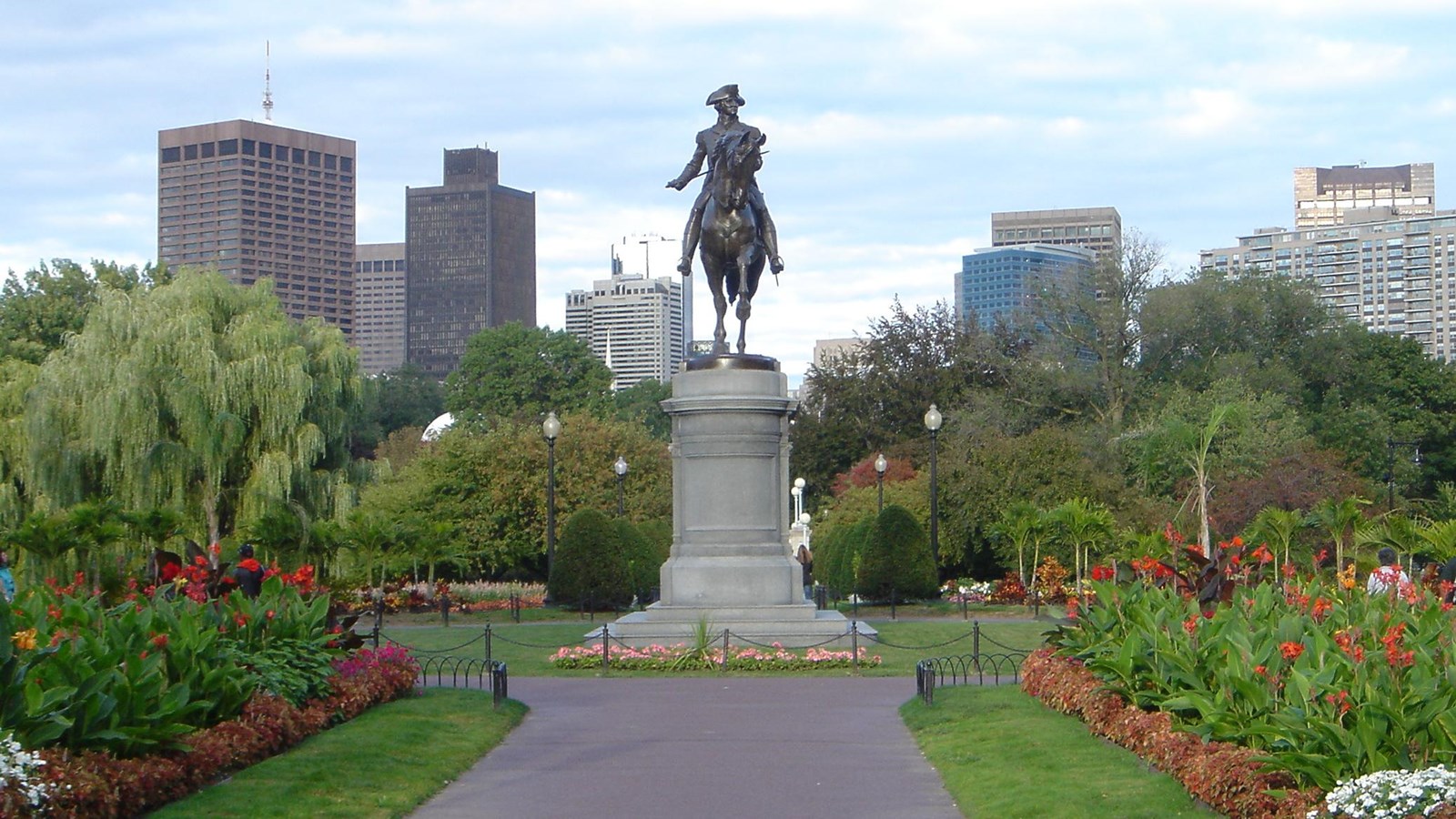Last updated: July 7, 2020
Place
Boston Public Garden

Photo by ROxBo, Public Domain.
Dating back to 1839, the Boston Public Garden is the first public botanical garden in the United States. While it is adjacent to Boston Commons, the style of the Boston Public Garden is much more decorative. The garden, surrounded by a Victorian cast-iron fence, features meandering paths decorated by statues, fountains, various trees and plants, and a six-acre pond with swan boats for visitors to ride. The Boston Public Garden has changed little since the mid-19th century and offers visitors a retreat from the urban environment of the city today.
Tidal marshes originally surrounded Boston, including the area west of Boston Common. In the early 19th century, Boston began a series of ambitious land filling efforts, converting marshland into valuable real estate. In 1824, after the building of Charles Street, the city purchased the newly created land west of Boston Common, reserving it for future public use. In 1839, a group of amateur horticulturalists, headed by Horace Gray, obtained permission to create a public Botanic Garden on the site. The new Botanic Garden became Boston’s second public park in 200 years, the first being Boston Common, and the first public botanical garden in the United States. Within a few years, a greenhouse and ornamental trees and plants were added to the site. However, the project came to a halt in 1847 when Gray lost his fortune. By the time Boston once again gained clear legal title to the site in 1856, the country’s imagination was being stirred by the new proposal for a Central Park in New York. Boston did not want to be left behind in the creation of parks. An act of the legislature ensured the permanent protection of that the former horticultural garden site as a public garden.
The city appointed a special committee in 1859 to study potential park uses for the property. The completed report discussed Boston’s dilemma and suggested preserving small parcels as parkland:
"While other cities are expending fabulous amounts in the improvements of parks, squares, gardens, and promenades, what should we do? To be behind in these matters would not only be discreditable to our city, but positively injurious to our commercial prosperity, and in direct opposition to the wishes of a vast majority of our citizens…The area of our city is too small to allow the laying out of large tracts of land for Public Parks, and it behooves us to improve the small portions that are left to us for such purposes" (City of Boston Report 1859).
That same year, the city held a design competition for the site. George Meacham won the competition with his proposal for a formal garden with a pond, a curved path system, and formal flowerbeds. By 1880, the 24-acre Public Garden featured a cast-iron surrounding fence, a suspension bridge spanning the pond, and plantings that included 1,500 trees and 90,000 bedding plants. The famous John Quincy Adams Ward designed the Ether Monument, the first sculpture placed in the Public Garden in 1867. The Swan Boats, designed by Robert Paget, began operation in 1877. Over time, the Boston Public Garden closely followed the landscape design that George Meacham laid out in 1859.
Ultimately, the small park would not satisfy the needs of a growing urban city. By the late 1860s, several individuals had made proposals for an extended park system in Boston. The ideas gained popular support for what became Boston’s Emerald Necklace park system. The Boston Public Garden is one of the nine parks that are part of the 1,100 acre chain of parks linked by parkways that Frederick Law Olmsted designed to connect the parks in the system.
The Boston Public Garden is located in downtown Boston, MA adjacent to the Boston Common, bounded by Bacon, Charles, Boylston, and Arlington Streets. It has been designated a National Historic Landmark. For more information, visit the City of Boston Parks & Recreation website.
To discover more Massachusetts history and culture, visit the Massachusetts Conservation Travel Itinerary website.
